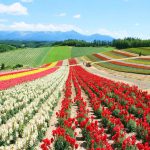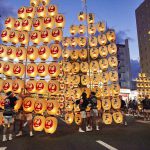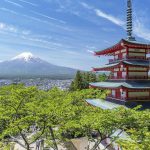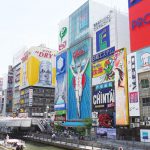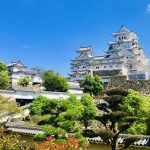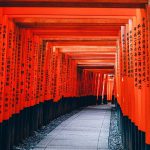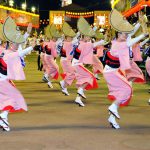Nara
Nara was the capital of Japan from 710 to 794, when Buddhism was introduced and developed in Japan. It has the largest number of national treasures and special historic sites in Japan. Many important historical buildings and cultural properties are also located there. Because it is close to Osaka and Kyoto, and has good accessibility, many people visit Nara on day trips. However, an overnight stay is recommended to fully explore the city.
Nara Park
Nara Park is a large park at the foot of Mt. Wakakusa that includes Tōdai-ji Temple, Kasuga Taisha Shrine, Kōfuku-ji Temple, and the Nara National Museum. It is a very pleasant place to walk around and relax. The park is home to more than 1,000 wild deer, which are believed to be messengers of the gods. Visitors are allowed to interact with them.
Todaiji Temple
The statue of Vairocana Buddha, also known as the Great Buddha of Nara, is the main object of worship at Todaiji Temple. In 743, Emperor Shomu issued an imperial edict to commission the massive statue to be built. The purpose of the construction of the temple was to protect the country; help the people through the power of Buddhism; and pray for peace from political upheavals, droughts, earthquakes and other natural disasters, and epidemics that were frequently occurring at the time.
The Great Buddha is made of copper and other materials collected from all over the country, and the height of the statue, including the pedestal called the Lotus Seat, is 18 meters high and 12 meters wide at both knees. It is overwhelmingly large in scale. The Great Buddha Hall, where the Buddha is enshrined, is one of the largest wooden structures in the world at 57.5 meters wide and 49.1 meters high. It was destroyed by fire several times, and the present Great Buddha Hall was rebuilt during the Edo period.
While visiting Todaiji, there are many other important sites that should not be missed, including Hokkedo (also known as Sangatsudo), which enshrines 10 precious Buddhist statues; the Nigatsudo, where an event called “Omizutori” has been held for over 1,200 years; the Nandaimon, which is the largest gate in Japan, standing at approximately 25 meters high, and displays magnificently carved wooden statues of Kongo Rikishi built by Unkei and Kaikei; and the Shosoin, where the relics of Emperor Shomu are stored (only the exterior is open to the public).
Kasuga Taisha Shrine
Kasuga Taisha Shrine in Nara Park was built in 768 to protect the capital city of Nara (known as Heijo-kyo during that time), and to pray for the prosperity of the people. The vermillion-lacquered shrine hall and corridors are very beautiful, and countless stone and hanging lanterns (well over 3,000) create an ethereal atmosphere.
Kofukuji Temple
Considered as one of the four major temples of the Nara period, and one of the seven major temples of the Heian period, Kofukuji was associated with the Fujiwara clan, that ruled with great power during those times. The temple’s extensive grounds feature several national treasures, including the five-story pagoda, three-story pagoda, and the Tokondo (East Golden Hall).
Isuien Gardens
Isuien is an expansive Japanese garden in Nara Park, built over two different eras (Edo period for the front garden; and Meiji period for the rear garden). It is a strolling garden with a pond, and a fine representation of Nara, where you can enjoy the beauty of the four seasons. It is a famous destination for Nara’s autumn foliage, as maple trees and dodan tsutsuji (a deciduous shrub, native to Japan) transform to beautiful shades of red. In the front garden, there is the Sanshu-tei, a thatched-roof teahouse, where you can enjoy a meal while admiring the garden. The rear garden features a view of the South Gate of Todaiji Temple and Mount Wakakusa that is truly magnificent.
Horyuji Temple
Horyu-ji Temple is believed to have been founded by Prince Shotoku and Emperor Suiko in 607. In the late 6th and early 7th centuries, Prince Shotoku promoted Buddhism, and introduced a constitution geared towards political reform that advocated an emperor-ruled nation.
Within the Horyuji Temple complex, you can see the world’s oldest wooden structures, the Kondo and the five-story pagoda. There is also the South Gate; Middle Gate; Cloister Gallery; Grand Lecture Hall; and Hall of Dreams, all of which are magnificent buildings of the past. The Kudara Kannon statue and the Tamamushi no Zushi (beetle wing shrine), housed in the Daihozoin, are national treasures of Buddhist art.
Located about 3 km northeast of Horyu-ji Temple is Hokki-ji Temple. On the premises is Japan’s oldest three-story pagoda that rises beautifully against the landscape; it is said to have been erected in 706. In 1993, Hokki-ji Temple was registered together with Horyu-ji Temple, as a World Heritage Site.
Yakushiji Temple
Yakushiji Temple was built by Emperor Tenmu in 680 to pray for a cure for the empress’ illness. At that time, Yakushiji was considered one of the four great temples in the country, but much of the complex was lost in a fire. Miraculously, the East Pagoda survived the fire, and is the only existing three-story pagoda since the temple’s founding; it is a national treasure that is definitely worth a visit.
Tanzan Shrine
Tanzan Shrine (also known as Danzan Shrine) is the world’s only wooden 13-story pagoda. It was built in 678 for the memorial service of Fujiwara Kamatari, and rebuilt in 1532. It is a magnificent structure, and the colorful foliage during the fall season is indescribably beautiful.
Murou-ji Temple
Murou-ji Temple, located deep in the wilderness of the mountains, was worshipped as a place of Shingon Esoteric Buddhism. Koyasan, the head temple of the Shingon sect of Buddhism, was forbidden to women. However, Murou-ji Temple, also known as “Nyonin Koya,” was historically open to women’s pilgrimages, and remains popular among women today. The temple complex, including the Kondo (main hall), Mirokudo Hall, as well as Japan’s smallest five-story pagoda, combine to create a sacred atmosphere.
Tenkawa Village
The village of Tenkawa is listed on the World Heritage List of “Sacred Sites and Pilgrimage Routes in the Kii Mountain Range,” and is home to Mt. Omine, the birthplace of Shugendo (Japanese mountain asceticism), which was established about 1,300 years ago. Many Shugendo followers have visited the Tenkawa Dai Benzaiten Shrine, where Benzaitennyo, the goddess of water, business, music and entertainment, is enshrined.
Mt. Yoshino
Mt. Yoshino is known as Japan’s most famous cherry blossom spot. It is said that a person can view 1,000 cherry blossom trees in just one glance. Indeed, the sight of 30,000 cherry blossom trees blanketing the entire mountain is truly spectacular. Mt. Yoshino served as an important historical site, where the emperors Go-Daigo and Go-Kameyama established rule in the 14th century during the Nanbokucho (North and South Dynasties) period. It is also known as a sacred place for Shugendo.


